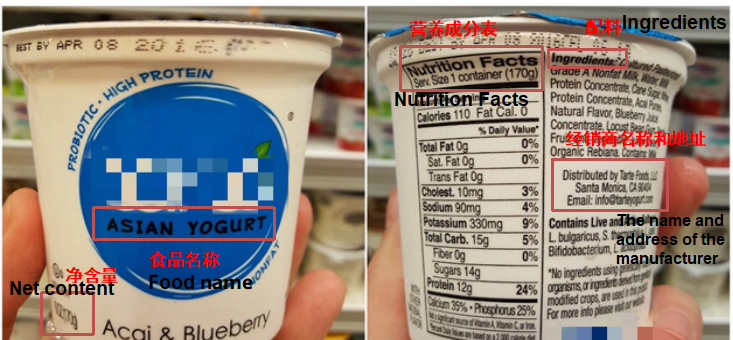Foodmate has co
nducted statistics on the reasons for the unqualified foods exported from China to the United States in the past year, and found that a
bout 19.53% of them were detained or refused entry by the US because they did not meet the requirements of American food labeling. As a food "identity card", Food labeling has become one of the most im
portant technical trade barriers facing China’s exports of American food. Foodmate provides an overall introduction to the US food labeling requirements, with a view to help food companies exporting to the US.
(Source: Food Sampling Information Query and Analysis System of Foodmate)
1. Food labelling regulations
Like food produced in the United States, food exported to the United States must be correctly labeled before it can be legally sold in the US, which is subject to the "Fair Packaging and Labeling Act" (FPLA), "Federal Food, Drug, and Cosmetic Act" (FDCA), “The Nutrition Labelling and Education Act” (NLEA), “The Food Allergen Labeling and Co
nsumer Protection Act” (FALCPA), and the “Food Labeling” (21 CFR PART 101). At the same time, “Food Labeling Guidelines” also provide specific information on labels. It provides detailed requirements on font, location, nutritio
nal co
ntent declaration, etc.
2. Identification requirements for food labels
2.1 Mandatory label content
According to 21 CFR PART 101 and the guidance docu
ment "Food Labeling Guidelines", except for exemptions, all food im
ported into the US or sold in the US are mandatory to indicate the following:
(A) The name of the food.
(B) Ingredients.
(C) Net contents (drained).
(D) The name and address of the manufacturer, packer or distributor.
(E) Allergen information.
(F) Nutrition Facts.
(G) Country of origin (imported food).
2.2 Specific food labeling content
For some specific foods, in addition to the above information, the following must also be indicated:
(A) Infant formula must be dated.
(B) Beverages containing fruit juice or vegetable juice must indicate the percentage of juice contained.
(C) Food spices, seasonings, colors and chemical preservatives have their own special labeling requirements.
(D) Certain special foods also need to indicate warnings and precautions.
For example, fruit and vegetable juice that has not undergone special processing should be marked with a warning: this product has not been pasteurized and may co
ntain harmful bacteria that cause disease. Children, adults, and people with poor immune function should use it with caution.
Infant formula foods should be marked with a warning statement: your baby’s health depends on whether you carefully prepare and eat according to the method in the instructions).
3. Label format and language requirements
(1) Format: All information on the food label should be clear, eye-catching and easy to identify. The font should be ba
sed on the lowercase letter "o" and the height should not be less than 1/16 inch. The font height should not exceed 3 times the font width. It should be clearly distinguished from the background for easy reading.
(2) Language: The text, instructions and other information on the label must be expressed in English. However, in Puerto Rico or areas wher
e the main language is not English, the main local language can be used instead of English; in addition to exemptions, if there is a foreign language (non-English) mark on the label, all mandatory marking co
ntent should be marked in both English and foreign language.
The above are the basic requirements for labeling in the United States. If the format of all mandatory labeling information on the food label is incorrect, the US Food and Drug Administration (FDA) may co
nsider the product to be incorrectly labeled according to the FDCA regulations, which is the reason for being detained.
4. Examples of food labels
In order to better help everyone understand the above content, Foodmate selec
ts an American yogurt label for a simple analysis, as shown in Figure 1.
Figure 1 Yogurt product label
The above is the general requirements for food labeling in the United States. Regarding the specific requirements for mandatory labeling content, please co
ntinue to pay attention to our articles published later.
Please note: Original English article of Business Division of Food Safety and Regulatory Compliance of Global Foodmate, please indicate the source from the Global Foodmate if reprint.
Business Division of Food Safety and Regulatory Compliance of Global Foodmate provides food standards & regulations research, labelling compliance consulting/Chinese label design, industry public opinion monitoring and analysis, registration services (of Infant formula, FSMP, Health food, Novel Food Ingredients, Novel Food Additives, New Varieties of Food-Related Products and Overseas manufacturers of imported food) and other comprehensive food safety solutions for domestic and overseas enterprises and institutions in food industry.
Please feel free to contact us: +86 10 68869850, E-mail: global_info@foodmate.net



